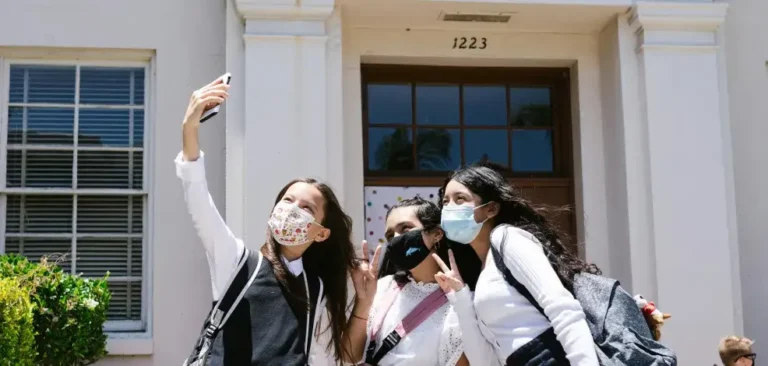In recent years, schools and libraries in the UK have faced increasing pressure to remove or restrict books,especially titles that deal with LGBTQ+ themes, race, gender identity, or other sensitive topics.
Are these removals genuine safeguarding measures,or a creeping form of censorship? Schools must tread carefully between protecting pupils and stifling intellectual freedom.
Here’s how the debate is playing out in practice.
1. The Rise of Book Removal Requests in UK Schools
Increasing challenges
Requests to remove books from library shelves are on the rise, with librarians reporting more frequent demands,largely from individuals or small groups rather than organised movements.
In a survey by Index on Censorship, over half (53 %) of 53 UK school librarians said they had been asked to remove books, and in 56 % of those cases books were removed.
Targeted content
The complaints overwhelmingly relate to LGBTQ+ themes, gender identity, relationships, race, or perceived sexual content.
Titles such as This Book Is Gay, Julián Is a Mermaid, Heartstopper, and ABC Pride have come under pressure.
Some libraries have reported requests to remove entire sections or collections,not just individual titles.
Cross-Atlantic influence
While the phenomenon in the UK is not as structurally embedded as in some US states, pressure groups and discourse trends from the US appear to be influencing UK debates.
One UK librarian reported finding US campaign literature on her desk after a removal request.
Self-censorship effects
Even when books are not removed, librarians say they increasingly avoid acquiring or displaying potentially controversial titles, fearful of backlash.
2. Safeguarding Arguments: What Proponents Say
When schools or parents push for book restrictions, the arguments often centre on child protection, age-appropriateness, and community values.
Age skill and maturity
Some contend that certain content, sexuality, gender identity, self-harm, violence, may be beyond the maturity of younger students, and require parental consent.
School leaders may argue that libraries should mirror the developmental stages of pupils and respect parental expectations.
Protecting vulnerable students
Supporters of removals claim some books could trigger distress, confusion, or identity conflict among younger readers, particularly around gender or sexuality.
They may see restrictions as a form of pastoral care or safeguarding.
Cultural or religious values
In religious or conservative communities, challenges often arise from a mismatch between book content and local moral or faith values.
Schools may feel pressure to respond to parental concerns in a way that maintains community trust.
Duty of care and reputational risk
Leaders sometimes justify removals on the basis of risk mitigation: avoiding controversy, pressure from inspection bodies, or negative publicity.
3. The Risks and Harms of Over-Restriction
While safeguarding is vital, overzealous book bans carry significant downsides for schools, pupils, and academic integrity.
1. Erosion of intellectual freedom
Removing books for ideological reasons undermines the principle that education should support inquiry, critical thinking, and exposure to diverse viewpoints.
2. Exclusion and marginalisation
When LGBTQ+ or minority perspectives are removed, pupils from those groups may feel invisible or unsafe.
Research shows seeing oneself represented in literature supports wellbeing, identity development, and belonging.
3. Slippery slope & chilling effect
Decisions to remove one book often lead to further restrictions, narrowing what is considered acceptable.
Librarians may preemptively avoid acquiring certain titles altogether.
4. Disproportionate impact on sensitive authors/topics
Authors addressing race, identity, or social justice are particularly vulnerable to censorship, even when their works are age-appropriate and pedagogically sound.
5. Legal, professional, and reputational risks
If schools over-step (e.g. banning works without legitimate grounds or against policy), they may face criticism, legal challenge, or accusations of censorship.
4. Finding the Middle Ground: Best Practice Guidance
Schools don’t have to choose between extremes. A considered, transparent approach helps balance safeguarding and access.
A. Clear library and content policies
- Draft and publicly share a challenged books / complaints policy that defines who can raise challenges, the review process, timescales, and appeal routes.
- Include criteria for removal, such as age appropriateness, educational value, and alignment with curriculum goals.
- Use collection development policies so acquisitions are deliberate, transparent, and defensible.
B. Challenge review panels
- Create a standing review committee including senior leadership, librarians, teachers, and (optionally) safeguarding leads or governors.
- When a book is challenged, follow due process: do not remove it immediately, but refer it to the panel for review.
- Record decisions and rationales transparently.
C. Parental consultation (within reason)
- Allow parents to raise objections respectfully, but not to veto school policy.
- Offer alternative access for those pupils (e.g. opt-out, parental preview) rather than wholesale removal (where appropriate).
D. Staff training and support
- Train librarians, senior leaders, and governors on intellectual freedom, censorship awareness, and safeguarding law.
- Support library staff when they face pressure or backlash; staff should not be isolated in decision-making.
E. Curriculum integration and guided use
- Use sensitive books with guided discussion, not free access in younger years.
- Embed critical literacy: teach pupils how to approach challenging content, evaluate perspective, and discuss respectfully.
F. Transparent communication
- Communicate clearly with stakeholders (staff, parents, governors) about library policy, decision-making, and values.
- Respond publicly (in policy documents or newsletters) to major challenges to avoid rumours or uncertainty.
5. Where Schools Should Be Very Cautious
- Immediate removal on complaint without review
- Blanket bans on entire categories (e.g. “no LGBTQ books at all”)
- Secret removals without notifying pupils, staff, or parents
- Allowing censorship by force of pressure (e.g. from outside pressure groups)
- Failing to evaluate books objectively (i.e. dismissing all objections without oversight)
Schools must also avoid conflating personal views with educational judgments. A complaint does not equal justification for removal unless it meets policy standards.
6. What Schools Gain by Resisting Over-Banning
- Stronger intellectual culture: pupils encounter complexity, difference, and challenge in a safe, guided space
- Better relationships and trust: through transparency and fairness, schools show they respect parent voice without capitulating
- Professional integrity: librarians and teachers can curate collections confidently with policy support
- Legal and reputational protection: clear policies reduce risk of arbitrary or discriminatory decisions
Conclusion
Book bans in schools may sometimes stem from sincere safeguarding concerns,but overreach is a real danger. Schools must build robust, transparent systems to distinguish valid concerns from censorship.
By doing so, they protect children, respect diversity, and maintain academic freedom.
To learn how Equitas supports school leaders and librarians in developing inclusive library policies, transparent challenge procedures, and defensible curriculum choices, visit equitasstaffing.com or contact us at contact@equitasstaffing.com.





